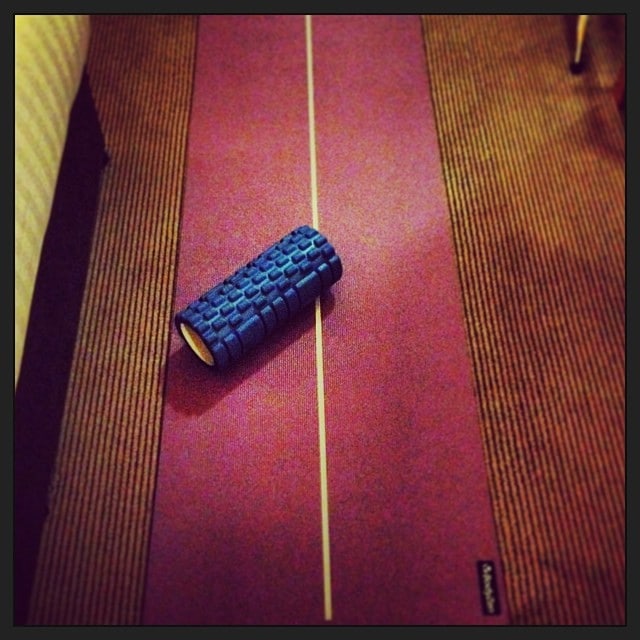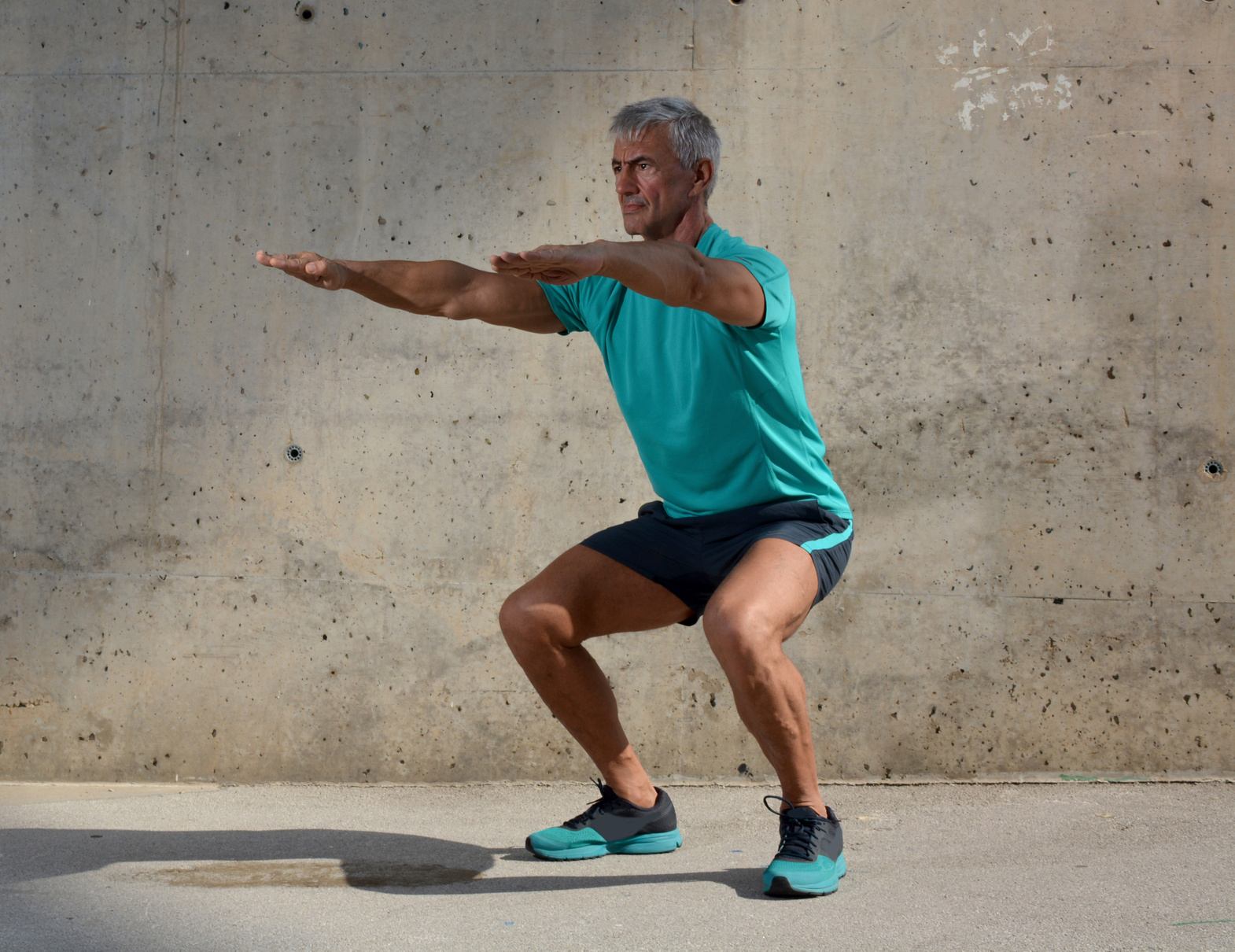Ever experienced that frustrating feeling of heavy legs while pounding the pavement?
Trust me, we’ve all been there! It’s like carrying around extra weights on your ankles, and it can seriously dampen your running spirit. But fret not, because we’ve got your back!
In this article, we’re diving headfirst into the mystery of why those legs of yours sometimes feel like they’ve turned into lead. And hey, it’s not just a one-size-fits-all answer. Nope, each of us is a unique running machine, so the reasons for heavy legs vary from person to person.
But don’t you worry! We’ve got a treasure trove of tips and tricks to help you uncover the secrets behind those weary legs. From rookie runners to seasoned pros, we’ve got something for everyone.
So, no more playing the guessing game! We’ll unlock the mysteries, reveal the culprits, and equip you with easy fixes and prevention hacks that will have you breezing through your runs like a champ.
Are you excited? I know I am! So, grab your favorite running shoes, lace ’em up, and let’s embark on this journey together. Get ready to bid farewell to heavy legs and embrace the freedom of smooth, effortless running.
Are you pumped? I can’t hear you! Let’s do this!.
A Beginner Runner
Ah, the woes of a beginner runner! We’ve all been there, haven’t we? Your excitement is soaring, and you’re raring to hit the pavement like a pro. But hold your horses, my friend, because sometimes our eager spirits can lead us astray.
You see, when you first start running, it’s like stepping into a whole new world. But here’s the thing: you can’t rush the process. It’s like planting a seed and expecting it to grow into a mighty oak overnight. Nope, it takes time, patience, and a sprinkle of wisdom to let those legs find their rhythm.
One of the most common blunders many beginners make is shooting off like a rocket right from the get-go. Oh, they want to conquer the world in a flash! But here’s a little secret: Rome wasn’t built in a day, and neither were super-strong running legs.
The Solution
Now, let me reveal the magical solutions to help those legs feel lighter than air. First, embrace the art of starting slow and steady. Gradually build up your intensity, like a painter adding layers to a masterpiece. Trust me, it’s a marathon, not a sprint.
And, oh, sweet recovery days! They are your best friends on this journey. Imagine them as little oases of rejuvenation where your legs can soak up the goodness and come back stronger than ever. It’s like a spa day for your hardworking muscles.
So, my dear beginner runner, remember this: there’s no rush to greatness. Take your time, enjoy the process, and watch your legs transform into the wings that carry you to new heights. With a dash of patience and a sprinkle of recovery, you’ll be running like a seasoned pro in no time! Happy running!
Overtraining
Overtraining is a sneaky villain that can creep up on anyone, even the seasoned runners who have been conquering the trails for months on end. It’s like a shadow that follows you around, waiting for the perfect moment to strike.
Picture this: you’re pounding the pavement day in and day out, pushing yourself to new heights, like a warrior in battle.
But here’s the catch: our bodies need time to recover, just like a warrior needs to rest after a fierce fight.
When you overtrain, it’s like putting your body on an endless treadmill without hitting the stop button. You might feel like a superhero at first, but soon enough, those heavy legs will be knocking on your door, begging for a break.
Now, let’s unveil the red flags of overtraining—those warning signs that your body desperately wants you to notice.
First, those pesky headaches that keep popping up like unwelcome guests at a party. It’s like your body’s way of saying, “Hey, slow down, I need some peace and quiet!”
Let’s not forget the ever-elusive decreased performance, like a magician losing their touch. It’s like your body saying, “I’ve given my all, and now I need time to recharge.”
Chronic fatigue, the silent saboteur, can sap your energy like a vampire in the night. It’s like a nagging feeling that something isn’t quite right, and it’s time to listen.
And then there are mood swings, the rollercoaster of emotions that can leave you feeling like you’re riding through a storm. It’s like your body’s way of telling you, “Hey, I need some TLC!”
Ah, the common cold, the unwelcome guest that crashes the party when you least expect it. It’s like a friendly reminder from your body to take a breather
Appetite loss and motivation loss, like two peas in a pod, can leave you feeling like you’re in a slump. It’s like your body saying, “I need some downtime, please.”
So how do you keep the overtraining monster at bay? Simple! Treat yourself to some well-deserved recovery days, like mini vacations for your muscles. Space out your training sessions, like a master chef perfecting their recipe.
And most importantly, listen to your body’s whispers and give it the rest it deserves, like a conductor orchestrating a symphony of balance.
More Recovery Days
Just like a spa day for your muscles, they are essential for keeping those heavy legs at bay and maintaining your running prowess.
Imagine your workout routine as a beautifully choreographed dance, and recovery days are those graceful pauses that give you the chance to catch your breath and recharge. They’re like the much-needed breaks between acts of a mesmerizing performance.
If you find yourself with those pesky dead legs, it’s a sign that your body is craving some downtime. Don’t worry; you don’t have to sacrifice your running goals by adding in some extra off days.
In fact, these recovery days are as crucial as your training days, like the yin to the yang, maintaining a perfect balance.
Repeating the same training pattern before leveling up is like practicing your favorite song on repeat until you master every note. It’s about building a solid foundation and gradually building upon it, like an architect constructing a magnificent building.
Now, let me introduce you to the magic of active recovery. Think of it as a gentle massage for your muscles, like a soothing balm that eases any tension. On these days, you don’t have to be a couch potato; instead, embrace the joy of movement in a gentler form.
Why not take a leisurely stroll through nature, like a carefree explorer discovering hidden treasures? Or dip into the refreshing waters for a swim, like a graceful dolphin gliding through the ocean waves? How about a peaceful cycle ride, like a breeze guiding you through picturesque landscapes?
And for the yoga enthusiasts, consider it your secret weapon for recovery. Like a tranquil oasis, yoga stretches and strengthens your body, enhancing flexibility and promoting relaxation.
Leg Day
Strength training is indeed a potent ally in your quest for efficient and pain-free running. It’s like forging a suit of armor to protect you on your running adventures, empowering you to conquer any terrain with ease.
Picture yourself as a mighty knight, equipped with a sword and shield. Your strength training regimen is the forge where these powerful weapons are crafted. With every squat, lunge, and deadlift, you’re molding your body into a formidable force, ready to tackle any challenge that comes your way.
However, like any good hero’s journey, there’s a pivotal moment of self-awareness. You must recognize that even the strongest knights need their moments of respite. Just as your muscles crave the empowering effects of strength training, they also need time to recover and rebuild, like the quiet hibernation of a bear in winter
Overdoing leg day can lead to fatigue and heavy legs, like an exhausted warrior carrying the weight of the world on their shoulders. Targeting those lower body muscles can be a double-edged sword. On one hand, it can strengthen your running foundation, like a solid fortress beneath your feet. But on the other hand, these large muscles demand proper recovery, like a well-deserved rest after a hard-fought battle.
Imagine your muscles as the earth, where seeds of strength are planted during leg day. Just like plants need time to grow and flourish, your muscles too need time to repair and grow stronger after strength training.
So, fellow adventurers, let me impart this wisdom: moderation is the key to unlocking the true power of leg day. Instead of overwhelming your body with endless sets and repetitions, opt for a more strategic approach. Like a skilled tactician, choose fewer sets and exercises, allowing your muscles the space and time to rejuvenate.
And don’t forget, my brave runners, balance is everything. While strength training complements your running journey, remember that your ultimate goal is to conquer the roads and trails with grace and vigor.
So, embrace the power of leg day, like a valiant knight brandishing their sword, and watch as your running performance soars to new heights. But also, cherish those moments of rest and recovery, like a wise monarch ruling their kingdom with wisdom and compassion.
Modify
Picture this: you’re at the gym, ready to embark on your leg day conquest. The weight rack stands before you like a treasure trove of possibilities, but be wary, my fellow adventurer, for the path to success lies not in hoarding heavy weights.
In the realm of strength training, the number of sets and reps you perform can be like the elusive balance that tips the scales between triumph and fatigue.
Instead of ten sets of 8 to 12 reps, consider the wisdom of a more strategic approach. Limit yourself to no more than five sets within the same range, and watch as your body responds with newfound strength and adaptability.
Choose The Right Weights
Think of it as taming a wild stallion. By reigning in the number of sets, you guide your body to adapt at a steady pace, like a skilled horse whisperer building trust with their majestic companion. Your muscles, like the spirited stallion, will become more responsive to the training, unlocking their true potential.
By doing less, you grant your body the gift of recovery, like a soothing balm on battle-weary muscles. It’s like taking a moment to catch your breath after an exhilarating race, allowing your body to regroup and emerge stronger than ever.
Remember that your quest for strength must always align with your running priorities. Running is your ultimate adventure, and strength training is but a faithful companion on this journey. Choose the right weights, like selecting a loyal sidekick, one who complements your running aspirations.
When lifting weights, consider the harmony of endurance and strength. Like a conductor orchestrating a symphony, blend your strength training with your running goals. Opt for weights that challenge you without overwhelming your running performance.
Just as a wise captain steers their ship through uncharted waters, navigate your training with prudence and foresight. Balance is the compass that guides you towards your running dreams, allowing you to sail smoothly through the seas of strength and endurance.
Diet Deficiency
If you find yourself not falling into the beginner runner category, steering clear of overtraining, and waving goodbye to weightlifting, then beware of the low iron levels that may be wreaking havoc on your running dreams.
Picture this: your body is a grand castle, and iron is the precious treasure that fuels your vitality and strength. Without enough of this precious element, the castle walls weaken, leaving you feeling like a brave knight struggling to bear the weight of your heavy legs.
In the realm of health, diet imbalances can be like dark shadows lurking in the corners, ready to sabotage your running quests. But fear not, brave runner, for the path to victory lies in the power of nutrition.
To defeat the iron deficiency dragon, arm yourself with the knowledge of nutritious, whole, and natural foods. Imagine your plate adorned with a colorful array of fruits, vegetables, and whole grains, like a knight’s shield of vibrant protection.
Research has unveiled the secrets of low iron levels, revealing the sinister restless leg syndrome as one of the foes you may face. This neurological disorder casts a spell of heaviness upon your legs, stifling your running performance like an evil enchantment.
But fear not, for the remedy lies in the bountiful harvest of iron-rich foods. Picture yourself savoring a feast of red meat and beans, the very elixir that can lift the burden of heaviness and restore your legs to their nimble glory.
Like a wise alchemist, embark on the quest to balance your diet, blending the right nutrients to create a potion of energy and strength. With each bite of iron-rich goodness, you’ll feel the power of restoration coursing through your veins, like a mystical potion replenishing your body’s vigor.
Get Screened
Ah, my fellow adventurer, if the heavy legs and overwhelming fatigue persist despite your valiant efforts, it’s time to seek counsel from the wise healers – the doctors of the realm! Just as a skilled navigator charts the course through uncharted waters, let your doctor guide you through the treacherous seas of uncertainty.
Picture this: you, the brave explorer, standing before the doors of the grand healer’s sanctuary, seeking answers to unlock the secrets of your weary legs. A simple blood screening shall be the magical map that charts the path to the truth hidden within your veins.
Fear not, for this journey is not one of peril, but of discovery. The doctor, like a sage alchemist, shall perform the ritual of blood analysis, unraveling the mysteries of your body’s chemistry. Within the crimson currents, lies the knowledge of iron levels, revealing any deficiency that may be behind your heavy leg woes.
With the results in hand, the doctor shall decipher the enigma and set you on the right treatment course. Like a skilled artisan crafting a masterpiece, they shall tailor a remedy just for you, whether it be replenishing your iron reserves or other measures to restore your vitality.
The doctor’s wisdom is not to be underestimated, for they are the guardians of health, skilled in the art of healing. Their guidance shall be your guiding star, leading you out of the shadows of fatigue and into the light of restored strength.
Eat Right
Ah, the nourishment of body and feet, my fellow running enthusiast! Let us explore the power of eating right and finding the perfect pair of shoes, for they can make all the difference in our epic running journey.
Imagine this: your body, a magnificent temple of strength and endurance, craves the life-giving elixirs of nutrition to fuel your adventures. As you tread the paths of running, your iron levels may be the key to unlocking the hidden reserves of energy.
Make sure to eat plenty of iron-rich foods, like a banquet fit for a champion! Savor the succulent red meat, its iron-infused essence flowing through your veins like a river of vitality. Relish the hearty beans, a treasure trove of iron that revitalizes your every stride.
Wrong Shoes
Are your shoes too tight and/or worn out? They might blame
Your footwear choice can also affect how comfortable—or uncomfortable—you feel during training.
A pair of ill-fitting shoes may impact your technique, increase muscle and joint load, and contribute—even cause—pain and injuries in your legs.
Get The Right Shoes
Head to the nearest running specialty store and ask the staff to help you pick a pair of shoes that fits your foot type, running style, and training goals.
The 400-500 Miles Rule
All running shoes have a definite lifespan, which is roughly 400 to 500 miles of road work. Keep track of your shoes and start looking for a new pair once your current kicks reach that mileage range.
Wiggle Room
Leave at least a half-inch of space between your longest toe and the end of the shoe. You should be able to wiggle your toes inside of the toe box without feeling contracted.
Hot Weather
Running in the heat? The scorching temperature could be the reason.
Here’s the truth.
As you log in the miles, you’ll naturally sweat more, which makes you more and more hydrated the farther you run.
Dehydration makes your blood thicker, which makes it harder to pump. Thus, you feel leg heaviness during (and after) running.
Drink Plenty
Whether you train in the cold or hot weather, remember to stay well hydrated and to replenish your electrolytes.
Drink enough water during the day and replace lost body fluids. Check my full guide here.
Consult your Doctor
If you’ve taken all of the above measures but still experience chronic leg heaviness when training, it could be time to consult your doctor. They should be able to help you rule out any deficiencies or underlying conditions that could explain your condition.
The rest is just details














